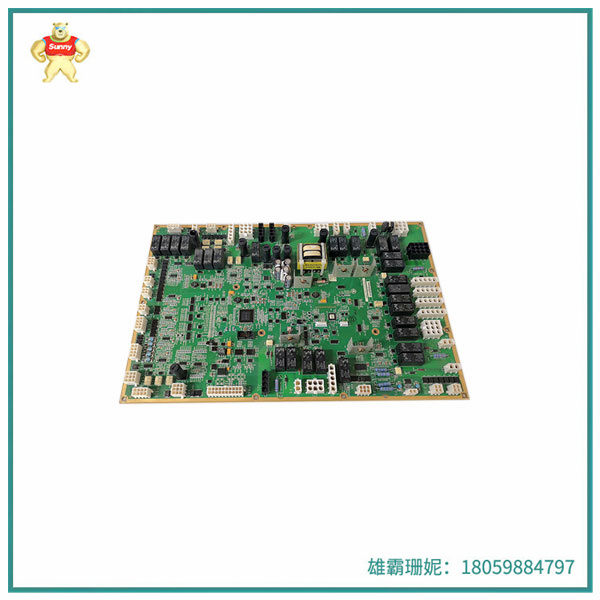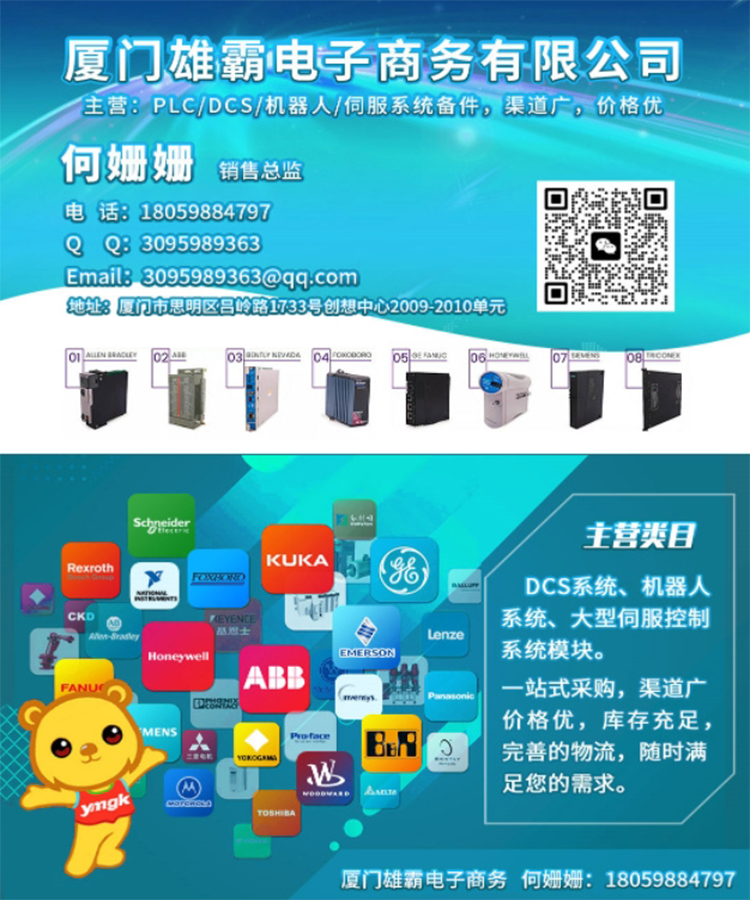
产品描述
IS200WROBH1A板是WROB 继电器保险丝和功率传感板,是通用电气生产的Mark VIe系列的一部分。该板被称为可选板,可与该系列中的其他几块板一起使用,所有板都用于 PDIO 离散输入/输出模块,WROB 可以连接的板是 TDBS、SRLY 和 TDBT 板。该板可用于单工或三模冗余 (TMR) 模式。当该板用于TMR应用时,WROB板将安装在TDBT板上,并可提供与接触式输入端子板(TBCI)组合的等效端子板。
当IS200WROBH1A板连接到TDBS板时,它能够将继电器部分转换为与IS20TRLYH1B板等效的电位。通过此选项,它为前六个初始继电器输出提供感应和熔断电源分配,并为最终继电器输出提供专用电源。该板的默认保险丝值为 3 点 15 安培。当该板与TDBS上的隔离电压一起使用时,它将用于检测板上六个保险丝对上的保险丝的不同状态。
继电器(Relay)是一种电控制器件,是当输入量(如电压、电流、温度等)达到规定值时,使被控制的输出电路导通或断开的电器。它可以分为电气量(如电流、电压、频率、功率等)继电器及非电气量(如温度、压力、速度等)继电器两大类。具有动作快、工作稳定、使用寿命长、体积小等优点。广泛应用于电力保护、自动化、运动、遥控、测量和通信等装置中。
以下是继电器的主要参数:
额定工作电压:IS200WROBH1A指继电器正常工作时线圈所需要的电压。根据继电器的型号不同,可以是交流电压,也可以是直流电压。
直流电阻:指继电器中线圈的直流电阻,可以通过万能表测量。
吸合电流:IS200WROBH1A指继电器能够产生吸合动作的最小电流。在正常使用时,给定的电流必须略大于吸合电流,这样继电器才能稳定地工作。而对于线圈所加的工作电压,一般不要超过额定工作电压的1.5倍,否则会产生较大的电流而把线圈烧毁。
释放电流:指继电器产生释放动作的最大电流。当继电器吸合状态的电流减小到一定程度时,继电器就会恢复到未通电的释放状态。这时的电流远远小于吸合电流。
触点切换电压和电流:指继电器允许加载的电压和电流。它决定了继电器能控制电压和电流的大小,使用时不能超过此值,否则很容易损坏继电器的触点。

Product description
The IS200WROBH1A board is the WROB relay fuse and power sensing board, part of the Mark VIe series produced by General Electric. The board is called an optional board and can be used with several other boards in the series, all for PDIO discrete input/output modules, and the boards WROB can connect to are TDBS, SRLY and TDBT boards. The board can be used in simplex or three-mode redundancy (TMR) modes. When the board is used for TMR applications, the WROB board will be mounted on the TDBT board and an equivalent terminal board is available in combination with the contact Input Terminal Board (TBCI).
When the IS200WROBH1A board is connected to the TDBS board, it is able to convert the relay portion to a potential equivalent to that of the IS20TRLYH1B board. With this option, it provides induction and fuse power distribution for the first six initial relay outputs and dedicated power for the final relay output. The default fuse value for this board is 3.15 amps. When the board is used with the isolation voltage on the TDBS, it will be used to detect the different states of the fuses on the six fuses pairs on the board.
Relay (Relay) is an electrical control device, is when the input amount (such as voltage, current, temperature, etc.) reaches the specified value, so that the controlled output circuit is switched on or off. It can be divided into two categories: electrical (such as current, voltage, frequency, power, etc.) relays and non-electrical (such as temperature, pressure, speed, etc.) relays. It has the advantages of fast action, stable operation, long service life and small size. Widely used in power protection, automation, motion, remote control, measurement and communication devices.
The following are the main parameters of the relay:
Rated working voltage: IS200WROBH1A refers to the voltage required by the coil when the relay is working normally. Depending on the type of relay, it can be AC voltage or DC voltage.
Dc resistance: refers to the DC resistance of the coil in the relay, which can be measured by a multimeter.
Suction current: IS200WROBH1A refers to the minimum current that the relay can generate suction action. In normal use, the given current must be slightly greater than the draw current for the relay to work stably. For the working voltage added to the coil, generally do not exceed 1.5 times the rated working voltage, otherwise it will produce a large current and burn the coil.
Release current: refers to the maximum current of the relay to produce the release action. When the current of the relay is reduced to a certain extent, the relay will return to the unenergized release state. The current is much less than the suction current.
Contact switching voltage and current: refers to the voltage and current that the relay is allowed to load. It determines the size of the voltage and current that the relay can control, and cannot exceed this value when used, otherwise it is easy to damage the contact of the relay.

Copyright © 2022-2024 厦门雄霸电子商务有限公司 版权所有 备案号:闽ICP备14012685号-33